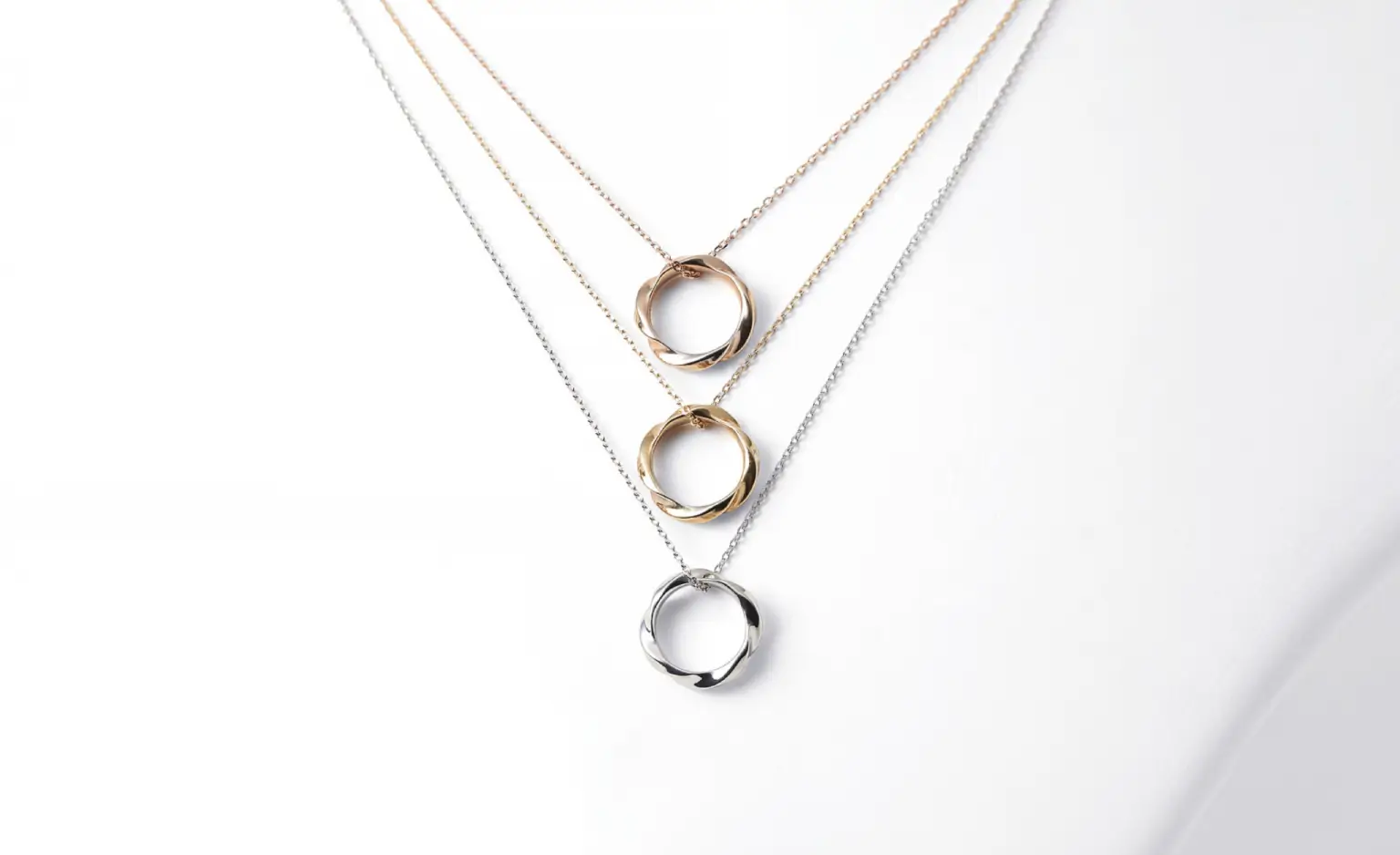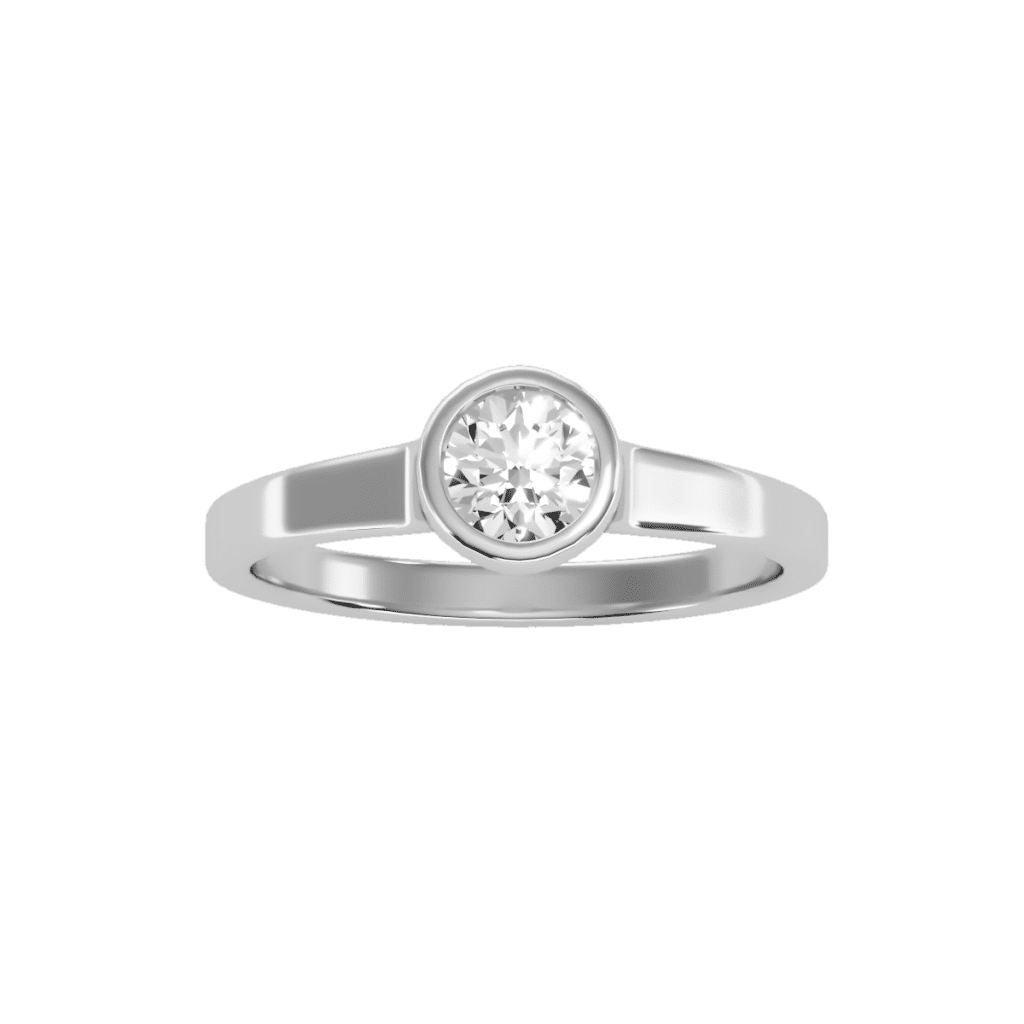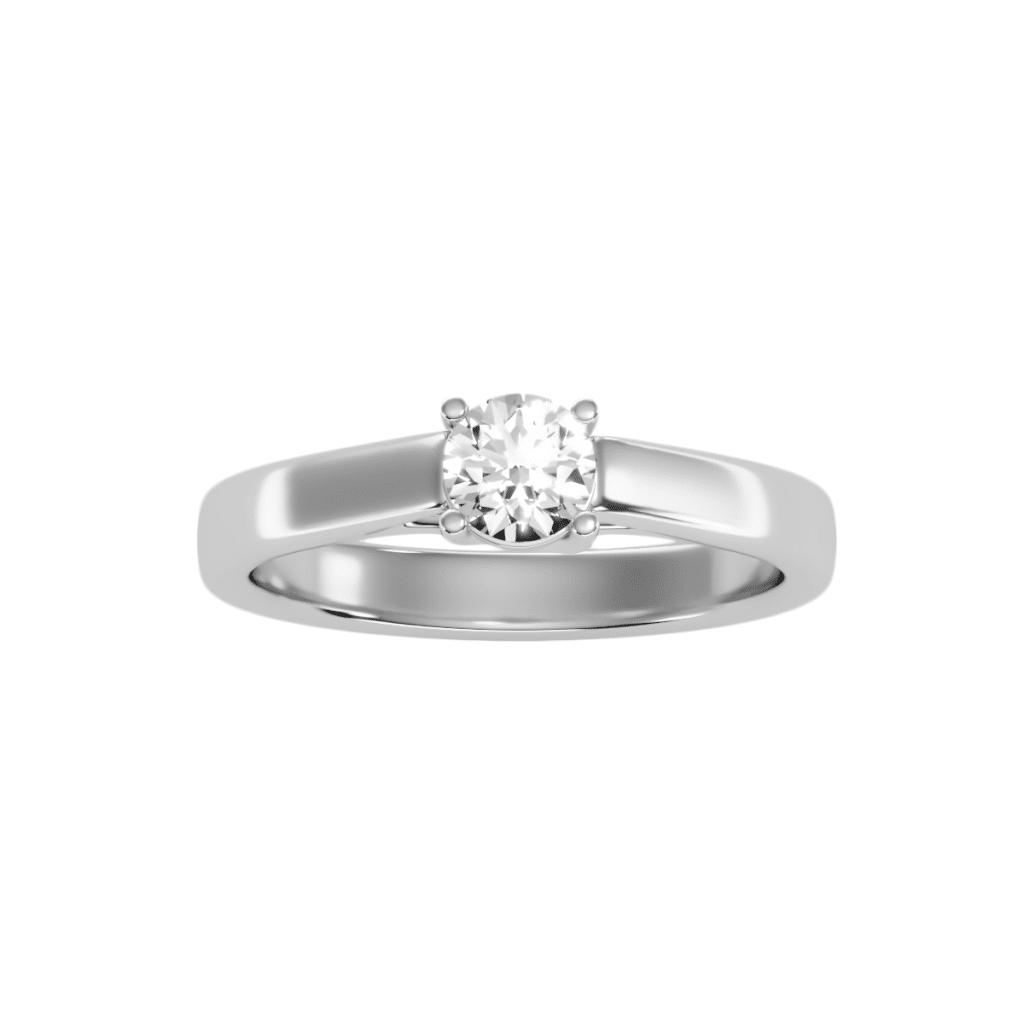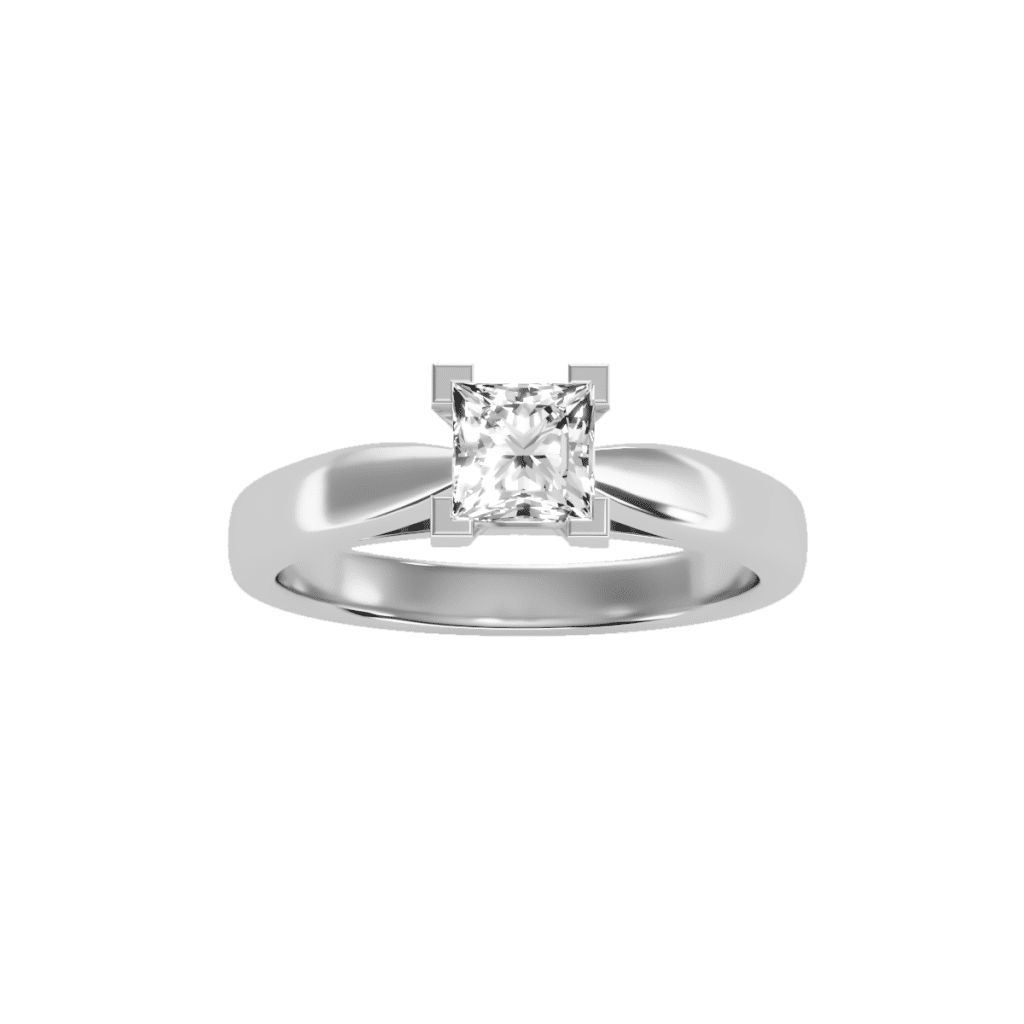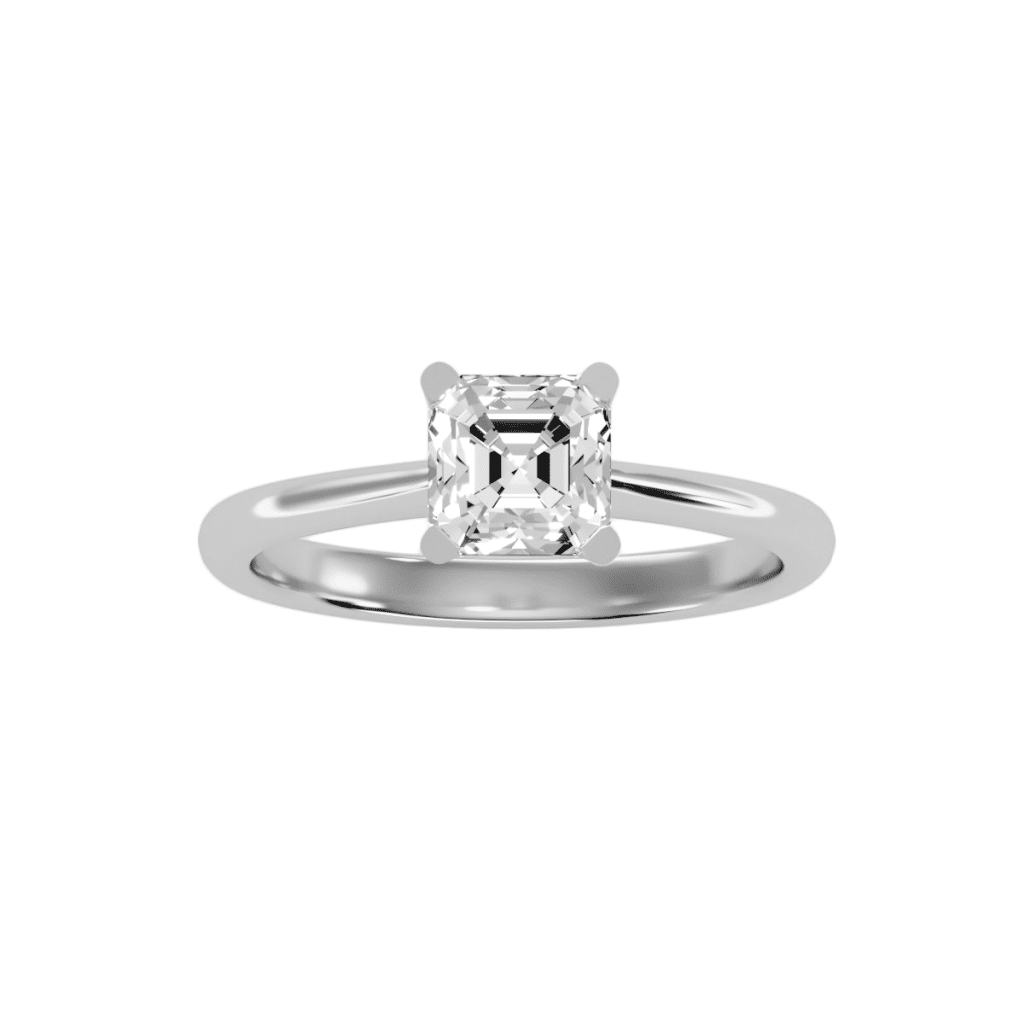Choosing the right metal for an engagement ring is a crucial part of the ring-design process. Once you know a bit about the basics of ring metals, deciding on a metal is a rewarding and simple process. Choosing between white gold, yellow gold, or platinum is as much as matter of personal preference as it is of budget. Before you make a final decision, it is worth weighing the pros and cons of the various types of engagement ring metals.
18k White Gold
18K white gold has a similar silvery white appearance to platinum, making it another stunning choice for jewelry.
In order to give white gold jewellery its modern silvery-white colour, pure gold is often alloyed with a mixture of palladium and silver, plus other whitening alloys. The piece is then plated (meaning it’s covered with a layer of another metal) with an extremely hard element called rhodium. It’s not uncommon after a few years to see a slight champagne-coloured tint in your white-gold jewellery. This can be a sign that your jewellery needs replating to restore its original whiteness.
White gold is more affordable than platinum, but requires more maintenance, so it may accrue more cost in the long run.
18k Yellow Gold
A mixture of silver, copper, pure gold (and a trace of zinc) gives yellow gold jewellery its rich shine. Although the percentages of each metal used to create the alloy vary, all formulas starts with 75% pure gold for 18k gold. The result gives off a classic warm glow that makes an especially good setting for lower colour grade diamonds with a faint yellow tint.
Yellow gold is more affordable than platinum, and at the same price point as white gold and rose gold.
18k Rose Gold
Rose gold is a lovely alloy of gold and copper, with a lustrous blush-pink tone. The more copper in the alloy, the rosier the hue. Rose gold has the same amount of pure gold as yellow or white gold. What’s different is the ratio of other metals that make up the remaining percentage of the alloy mix.
The copper in the alloy lends strength to 18K rose gold, so it is a durable choice which does not require extra maintenance.
Rose gold is more affordable than platinum, and has approximately the same price point as white gold and yellow gold.
Platinum 950
Platinum jewellery is very rare; in fact, 30 times more so than gold. Our platinum is 95% pure (5% iridium, palladium, ruthenium, and other alloys), and its purity makes it naturally hypoallergenic, ideal for those with sensitive skin issues. Platinum is a naturally lustrous silvery white, and because of its beauty and hypoallergenic status is a sought after metal for jewelry. It requires very little maintenance, as it is corrosion resistant and does not tarnish. It is also less malleable than gold.
Platinum is the most expensive of the precious metals, due to stunning appearance and superior durability.
How to care for your Jewelry
Prolonged or repeated exposure to chlorine or other chemicals in cleaning products can damage your jewelry. We recommend that you remove your jewelry while gardening or cleaning, especially gym and outdoor activities, to reduce ware and damage cause to the glossiness. To clean your jewelry, use a solution made of warm water, detergent-free soap and a soft brush. When not wearing them, please store your jewelry in a soft cloth bag or original box to help prevent scratches.

